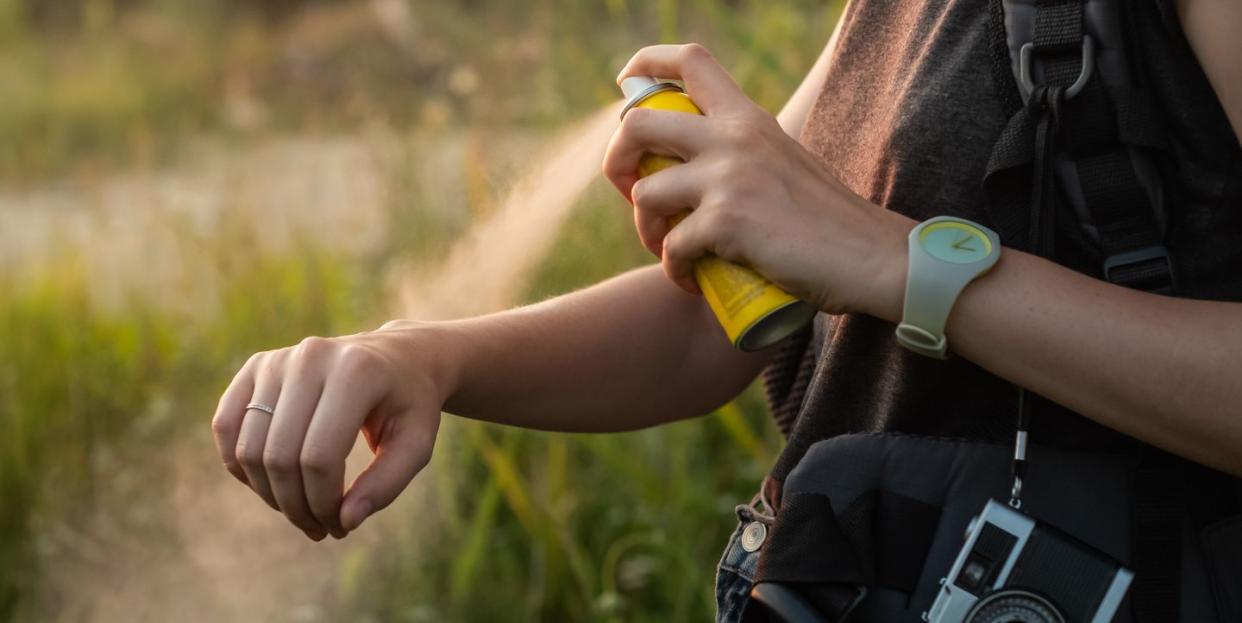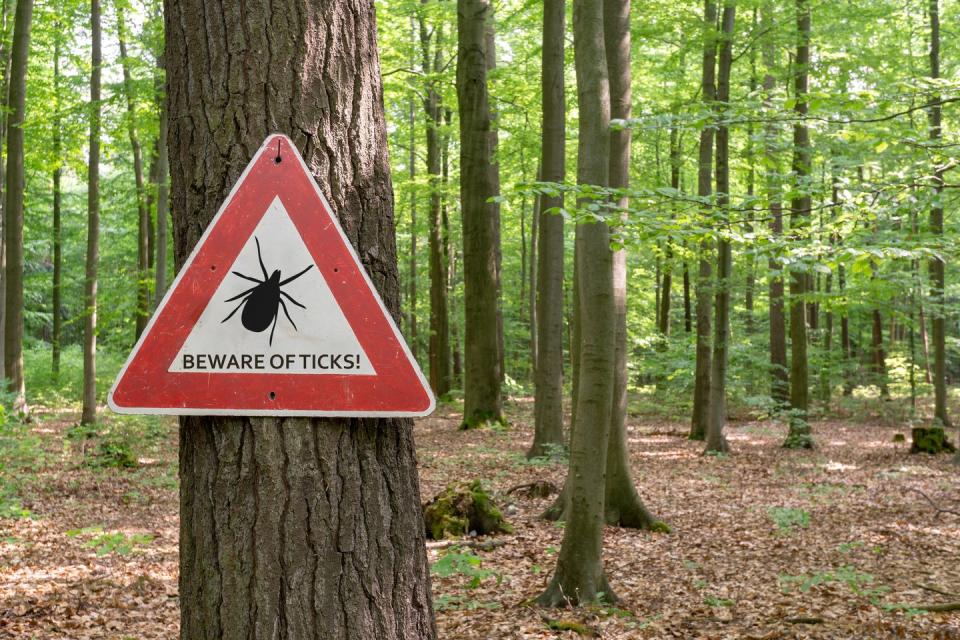The Best Tick Repellents to Stock Up on Before Summer Hits

Summer is the best time of year to go hiking, have a cook-out in the park, and hit the trails for your run. But while soaking up the great outdoors will get you moving and boost your mood, it still comes with its fair share of risks—like sunburns, heat stroke, and too many bugs to count.
These bugs include ticks, which have been spiking in numbers across the United States—and they’re carrying diseases with them, according to the Centers of Disease Control and Prevention (CDC).
The number of tick-borne disease cases in the U.S.—like Lyme disease and Rocky Mountain spotted fever—has more than doubled in the last 13 years, according to the CDC. What’s more, preliminary research from the American Academy of Allergy Asthma & Immunology finds that alpha-gal allergy—a red meat allergy caused by a tick bite—is a major trigger behind life-threatening reactions.
But fear of these blood-sucking critters shouldn’t keep you inside all season. If you take the proper measures—say, choosing the right tick repellents and doing full-body checks after you’ve been outdoors—you can minimize your chances of ever having to deal with a tick bite.
How to prevent tick bites

First, get to know your surroundings.
If you want to keep ticks away from your body, it’s helpful to know where they like to hang out. Grassy, brushy, and wooded areas are tick minefields—so if you love to go hiking, trail running, biking, camping, spend lots of time in your garden, or take your dog on a daily walk through the park, there’s a good chance you could be exposed to ticks. Be wary of wood piles, leaf litter, rock walls, and beach grass, too.
Does that mean you should completely avoid these areas? Not necessarily—but it does mean you should take extra precautions if you’re going to spend your day in this type of environment. Which leads us to our next point…
Choose the best tick repellent and use it the right way.
You may have heard that natural solutions, like using essential oils for ticks, are effective—but that simply won’t cut it. When it comes to repellents that truly keep ticks away, there are four active ingredients you can look for, according to the CDC:
DEET
IR3535
Picaridin
Oil of lemon eucalyptus
“Tick repellent chemicals are not well understood, but they are thought to disrupt tick host-seeking behavior,” explains Jody Gangloff-Kaufmann, an entomologist at Cornell University’s College of Agriculture and Life Sciences. “Ticks have a sensory organ on their forelegs that detects odors, CO2, and heat. Repellents are thought to interfere with that sensory organ.”
Choose a tick repellent that contains at least 20% (up to but no higher than 30%) of these active ingredients, since repellents containing 10% or less may only protect you for a couple of hours. The American Academy of Pediatrics recommends that repellents used on children should contain no more than 30% DEET specifically. If you prefer to use a more natural product, repellents containing oil of lemon eucalyptus are your best choice.
Before you purchase a repellent, make sure it is approved by the Environmental Protection Agency, which you can search for here. The following top-rated options all fit the bill:
The best way to use your tick repellent? Follow the instructions on the label and apply your repellent to the skin only when the label says to do so, says Gangloff-Kaufmann. (You’ll find that most tell you to apply it to your clothing, unless you have exposed skin.) Avoid spraying directly onto your face, near your eyes, or over cuts or irritated skin.
Protect your clothing and gear with permethrin.
Another way to tick-proof your body (and surroundings) is to treat your clothing and gear with permethrin, a type of insecticide. In one recent study from the CDC, researchers exposed various permethrin-treated clothing samples to different tick species, including blacklegged ticks (or deer ticks), which carry the bacteria that causes Lyme disease. The researchers found that young ticks died in less than a minute after coming in contact with the material—and those that didn’t weren’t able to move properly.
“The use of permethrin-based sprays is intended to knock ticks down and kill them, not solely as a repellent,” says Gangloff-Kaufmann.
Your best bet? Buy a permethrin-based solution and treat your hats, shoes, jackets, and camping gear up to 48 hours before you need tick protection, says the CDC. Permethrin should never be applied to your skin.
Then, embrace the full-body check.
You’re not completely in the clear once you make your way back inside. If a tick does end up on your clothing or body, getting rid of it ASAP will minimize your chances of catching a tick-borne disease.
Your next move, then, is to fully examine your body for ticks that may have hitch-hiked their way into your home. After you check your clothing for ticks, throw them in the dryer on high heat for at least 10 minutes (or a bit longer if your clothes are damp), suggests the CDC. This will ensure any stragglers are killed.
Then, hop into the shower to wash away ticks that aren’t already attached to your skin. Be sure to check under your arms, around your ears, inside your belly button, behind your knees, between your legs, and in your hair. Your pets are at risk, too, so carefully check them for ticks daily.
If you happen to find one attached to your skin, here is the right way to remove a tick.
Like what you just read? You’ll love our magazine! Go here to subscribe. Don’t miss a thing by downloading Apple News here and following Prevention. Oh, and we’re on Instagram too.
You Might Also Like

